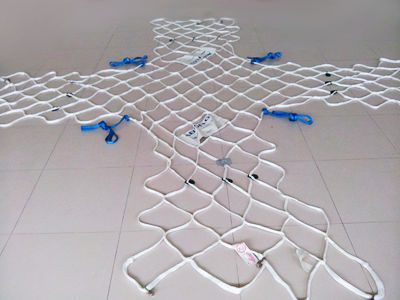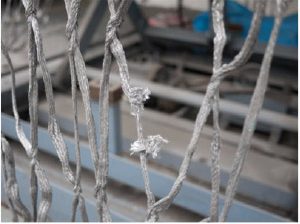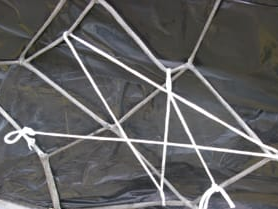Securing Flight: The Crucial Role and Care of The Air Cargo Net

Cargo nets, often overlooked and misunderstood, play a crucial role in ensuring the safety of air cargo during transportation. Despite their widespread use, the air cargo industry frequently encounters improperly maintained or incorrectly fitted nets during routine inspections.

The history of cargo nets dates back over 40 years, originating before the era of wide-body aircraft like the 747. Initially heavy and challenging to handle, modern cargo nets have undergone significant improvements. However, regardless of advancements, their proper use and maintenance remain critical to fulfilling their vital safety function.
Understanding the Purpose:
Contrary to popular belief among air cargo personnel, cargo nets are more than just tools to prevent cargo from falling off pallets. They are essential aircraft equipment designed to restrain loaded pallet contents during extreme flight conditions. These nets undergo rigorous testing to meet high load conditions throughout their operational life, adhering to TSO C90 requirements.
Guidelines for Proper Net Handling
Net Condition:
- Cargo nets, being textile items, are vulnerable to poor handling. Proper care involves
storing them away from UV light, grease, oil, or contaminants.
- Nets permanently attached to pallets should be centered on the empty pallet before
stacking. Detached nets should be stored in individual bags, segregated by the airline.
Net Airworthiness:
- A net in use must be in airworthy condition as defined by the manufacturer's
guidelines.
- Any damage beyond allowable limits, as specified in the Component Maintenance
Manual (CMM) or Operational Data Label (ODLN), requires removal from service.
- Repairs should only be conducted at authorized ULD repair facilities, following
manufacturers' instructions and materials.

Net repaired beyond allowable limits
Net Installation:
- Follow a defined set of steps to install cargo nets on loaded pallets.
- Ensure even placement over the load, proper insertion of fittings into pallet seat
tracks, and secure loose netting using reefing hooks.
- Lashing lines or loops should close the net corners evenly, maintaining a secure yet
non-damaging tension.
General Industry Statements:
- Follow a defined set of steps to install cargo nets on loaded pallets.
- Ensure even placement over the load, proper insertion of fittings into pallet seat
tracks, and secure loose netting using reefing hooks.
- Lashing lines or loops should close the net corners evenly, maintaining a secure yet
non-damaging tension.
Guidelines for Proper Net Handling
Cost and Respect:
- Cargo nets are costly assets, and any damage, especially from cutting, can render
them non-airworthy.
- Airlines invest significantly in cargo nets and expect their assets to be treated with
respect.
Non-Airworthy Nets:
- Regulatory intervention may occur if non-airworthy cargo nets are discovered during
random checks.
- A net without a readable TSO label is unusable and must be withdrawn from service.
Double Netting:
- Regulatory intervention may occur if non-airworthy cargo nets are discovered during
random checks.
- A net without a readable TSO label is unusable and must be withdrawn from service.
In conclusion, the air cargo net is not a mere accessory but a critical piece of aircraft equipment. Their proper use and care are essential for maintaining airworthiness and avoiding unintended consequences. Adhering to established procedures and manufacturer guidelines ensures the safety and longevity of cargo nets in the air cargo industry.
How Can We Help You
Welcome to CargoSecures, your trusted partner in air cargo safety. How can we tailor your order today? Specify your requirements below, from customizable aesthetics to ultra-durable nets and webbing crafted with the world’s strongest yet lightest fiber. Let's craft a solution that ensures your cargo reaches its destination securely with the least added weight.
